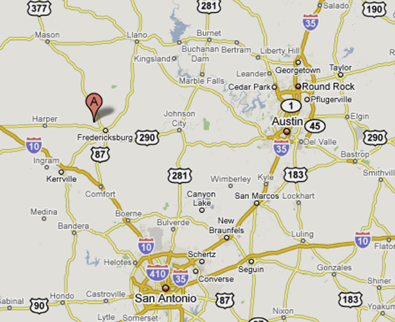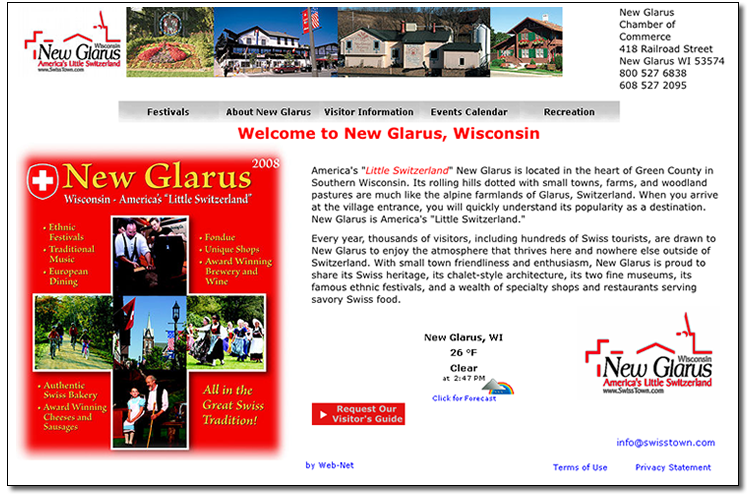|
In the previous three chapters we took a brief look at the dialect varieties in Germany, Switzerland and Austria. However, German dialects are not only spoken in these European countries. As a result of German immigration before 1800 and in the mid 19th century, the US also has several German speaking areas. Their heritage, history, linguistic status and features are incredibly rich, and we cannot do them justice in a mere mini-segment. Therefore, please read the following information only as an introduction, and do search for more information on the Internet about these dialects, especially if your heritage is German and you live in the US! For the sake of space, time and clarity, in this chapter we will take a look at
1. Texas German  Texas German is a dialect spoken by German immigrants in the Texas Hill country. These German settlers emigrated from various regions of Germany to the Hill country (in Central Texas, around Austin) during the mid-19th century. Town names like Boerne, Fredericksburg, New Braunfels or Schulenburg all point to the German heritage of their founding fathers. However, while Texas German is commonly thought of as a single dialect, this is in fact erroneous -- it is really more a collection of dialects. For example, the Texas German you hear from one Texas German speaker may be vastly different than the Texas German you hear from another speaker! Why is this? Primarily, this is due to the fact that, as mentioned above, the settlers came to Texas from such disparate areas of Germany. Although German was spoken almost exclusively in the Hill Country settlements before World War I and World War II, anti-German sentiments during these wars led to the decline of German. Texas German speakers stopped teaching their language to their children and used more and more English in their communication with each other. Today the dialect is almost extinct, spoken only by a few aging members of this speech community. Speakers of German usually do not have too much of a problem understanding Texas German varieties. However, there are some words that were either invented or "Germanized" from English over the last century and a half because they did not exist in the vocabulary of the early immigrants but were needed by following generations. These examples are from http://en.wikipedia.org/wiki/Texas_German
Note: For more information please visit the Texas German Dialect Project located at the University of Texas at Austin. You can also find an article about Texas German on Spiegel Online. 2. Pennsylvania Dutch/Deitsch/German/Deutsch Speakers of Pennsylvania Dutch are descendents of German immigrants who, for religious reasons, came to Pennsylvania as early as the 17th century and settled primarily in the southeastern part of Pennsylvania. Scholarly consensus holds that the term Dutch does not refer to the people of the Netherlands but rather reflects the adjective 'Deutsch' meaning German. The immigrants who settled in southeast Pennsylvania came not only from Germany (Rheinland-Westphalen) but also from Switzerland and the Alsace. However, Pennsylvania Dutch is a "daughter-language" of Palatine German (a West-Franconian dialect), spoken in Southwestern Germany. Pennsylvania Dutch is spoken even today (often because the communities that speak it live in relative isolation from the dominant English-speaking linguistic environment). Communities can be found in Pennsylvania - obviously - as well as in a wider range around Pennsylvania: Maryland, West Virginia, North Carolina, Ohio, and Indiana. You can hear some Pennsylvania Dutch in the movie The Witness with Kelly McGillis and Harrison Ford. Similarly to Texas German, Pennsylvania Dutch has incorporated a number of English loan words. In addition, Pennsylvania Dutch speakers also use words which do not exist in standard High German but are adaptations from German dialects or words they have coined (neologisms).
Note: For more information on Pennsylvania Dutch please visit the following websites:
Wisconsin German By the 1860s Germans made up the largest number of foreigners in Wisconsin. Most of these German immigrants came from Prussia. From 1881 to 1884 a second wave of German immigrants arrived in Wisconsin. Swiss immigrated to a much lesser extent to Wisconsin and founded cities like New Glarus. Some of the dialects spoken are Wisconsin High German, Kölsch, Pommerisch, Glarner Swiss German, Lëtzenbuergesch and Oberbrüchisch. The following link at the University of Wisconsin - Madison gives you a good overview of the German dialects spoken in Wisconsin with available audio material. Check it out. http://csumc.wisc.edu/AmericanLanguages/german/states/wisconsin/german_wi.htm |




